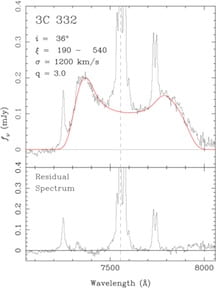Faculty Profile: Mike Eracleous
|
Mike Eracleous Professor of Astronomy & Astrophysics 414 Davey Lab Phone: +1 814-863-6051 |
 |
My research focuses on accretion power and compact objects, including white dwarfs, neutron stars and black holes. I am especially interested in accretion onto supermassive black holes and how this process powers active galactic nuclei and quasars. My work is largely observational (I am, primarily, a spectroscopist) but it also involves the development of physical models as a means for interpreting observations.

A substantial fraction of my work has been devoted to understanding the dynamics and physical properties of the gas that produces the broad emission lines that we see in the spectra of quasars. These are a hallmark, indeed a defining characteristic, of quasars yet their origin is poorly understood. The gas that produces these lines may be part of the accretion flow into the black hole or part of an outflow that is associated with accretion. Understanding the properties of this gas is now imperative since the broad emission lines are used as tools to weigh the black holes and as signposts for supermassive black hole binaries.
Some of my most recent projects are related to the growth of supermassive black holes in the centers of nearby galaxies and the processes by which they influence the evolution of the galaxies themselves. These topics are intimately connected to galaxy evolution. Specifically have been studying the properties of gas that is outflowing from quasars in an effort to understand the physical conditions in the gas and to test models that are meant to describe the dynamics of outflows. I have also been carrying out a systematic search for supermassive binary black holes that are thought to be an inevitable consequence of major galaxy mergers. Finding them constitutes a test of models of galaxy evolution via mergers as well as a number of models that invoke binary black holes to explain the properties of the nuclei of elliptical galaxies and the morphology of radio jets.
